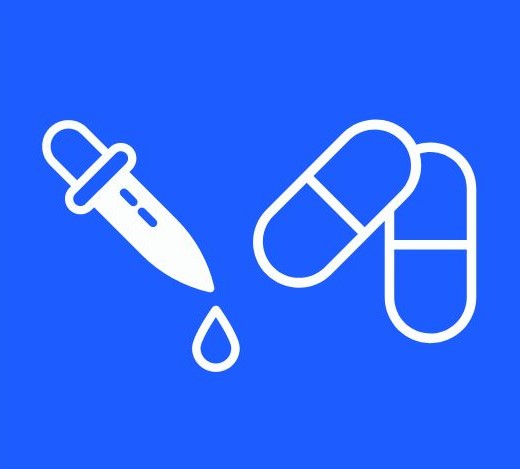Topical finasteride and oral finasteride are both treatments for hair loss.
What is Hair loss?
Normally you lose some hair, 50-100 strands, every day, but new hair grows back. When it doesn’t, It is called hair loss or alopecia. It can occur on the head or the body and it can be due to genes, hormones, health problems or aging.
Hair loss varies, resulting in thinning hair, receding hairlines in men, or wider parts in women. It can be temporary from medications, health issues, or infections, or linked to hormonal changes, stress, immune problems, or harsh hair treatments. When the cause is treated, hair loss due to underlying conditions can often be reversed.
Hair loss treatments
The choice of hair loss treatments can vary depending on the root cause of the hair loss, with different approaches for both men and women. Options are topical solutions, oral medications, surgical procedures or a combination of these.
Hair loss information
What is Finasteride?
Finasteride is used to treat hair loss. It is a prescription medication which treats male pattern baldness and benign prostatic hyperplasia (BPH). Finasteride works by inhibiting the enzyme 5 alpha reductase, which converts testosterone into DHT, a hormone that can contribute to hair loss.
It is available in topical and oral form. Both oral and topical forms of finasteride have demonstrated effectiveness in addressing hair loss in men. However it does take months to a year for results to become evident. The decision between these options should consider individual preferences, ease of application, and how each person responds to the treatment.
Can it be used by women?
It is usually prescribed for men due to potential side effects in women, especially those of child-bearing age or women who are pregnant, as it can increase the risk of birth defects. However, it has been off-label for use in postmenopausal women or those not planning to conceive.
Oral Finasteride
It is in an oral tablet form, usually available in 1 mg tablets and works on a systemic level, affecting the whole body. It is a long term treatment, meaning its effects will only last as long as the medication is taken.
Finasteride tablets are effective in treating male pattern baldness. However due to its systemic absorption it can also lead to side effects in some individuals. Some of which are potential issues from sexual dysfunction to mood changes.
Topical Finasteride
Finasteride in a topical formulation, can be directly applied to the scalp to treat hair loss. A topical application is designed to target the scalp directly offering a localized treatment. It is compounded as a liquid (spray or solution) or a gel and applied to the scalp so it can interact with hair follicles.
The main advantage of topical finasteride is the reduced systemic absorption, which can likely reduce potential side effects.
Topical finasteride information
Topical finasteride vs Oral finasteride

While oral finasteride has been a conventional choice, topical versions, such as sprays or solutions, provide an alternative method that may result in fewer systemic side effects.
Studies have clinically proven that topical finasteride can be as effective as oral finasteride in preventing hair loss and promoting regrowth. However effectiveness can vary between individuals, and can be influenced by factors such as unable to consistently apply the medication.
The choice between topical and oral depends on individual preferences, comfort with administration, and personal response to treatment. Some users may find that the topical form offers a more convenient and side-effect-light solution to their hair loss concerns. While others may prefer the long-established oral option. Consulting with a healthcare professional is advisable to determine which approach aligns best with one’s specific needs and expectations.
Alternative solutions
In cases where Finasteride poses issues such as allergic reactions, unwanted side effects of finasteride, or potential interactions with other medications, there are alternative treatments worth exploring. These options encompass microneedling which stimulates hair growth with tiny needles. There are steroid injections in areas with hair loss to encourage regrowth, laser therapy, and hair transplantation. For any concerns during your hair loss journey, it’s advisable to talk to your doctor or pharmacist.